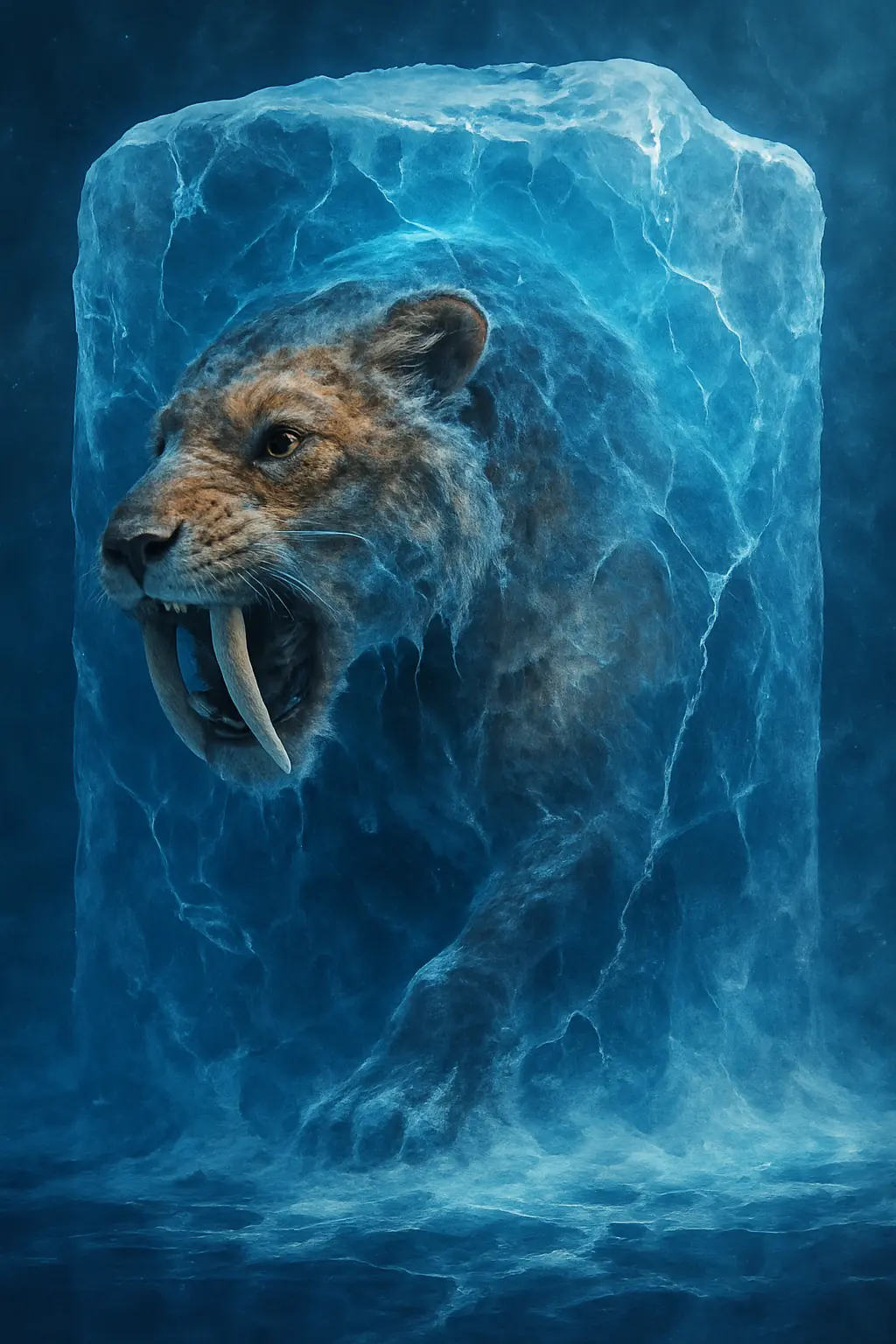
Incredible Ice Age Discoveries: Prehistoric Animals Preserved in Near-Perfect Condition Part 1
Have you ever wondered what kinds of prehistoric animals have been preserved to this day? In what condition they were found, what they looked like, and more importantly, whether science might one day bring them back to life? It sounds like incredible science fiction, maybe even a good premise for a new Jurassic Park movie, but the reality is even more fascinating. Scientists have discovered just such astonishingly well-preserved bodies hidden deep in the permafrost.
In the frozen layers of Siberia and Alaska, they have unearthed various long-extinct Ice Age creatures from baby mammoths to ancient wolves and cave lions. These beings have left us not only their stories but also fragments of DNA that may one day rewrite the history of evolution.
Some of the most famous finds have even been given names often inspired by the location of discovery or in honor of those who found them. But what exactly do these discoveries tell us about the past, and could they affect the future? Here’s a list of the most remarkable prehistoric remains ever recovered from the ice.
When people hear “Ice Age,” most immediately think of mammoths. These giant, furry creatures have become icons of prehistoric times, and thanks to Siberia’s frozen ground, some of them have been preserved in such incredible condition that they continue to astonish scientists.
1. Mammoths
One of the most famous mammoth discoveries is the mammoth known as Yuka a remarkably well-preserved female that remains one of the best-preserved mammoths ever found. She was discovered by a local hunter in August 2010 near the village of Yukagir in Siberia, which is where she got her name. Analysis of her teeth and tusks revealed that Yuka was about 6 to 8 years old when she died. While scientists believe she may have been attacked by lions or other predators, there’s no evidence that she was killed by them. Interestingly, Yuka’s body included a preserved brain and parts of her blood an extremely rare occurrence.
Summary:
- Discovery date: 2010
- Location: Yakutia, Siberia
- Age at death: 6–8 years
- Estimated death: Around 39,000 years ago
Interesting facts:
- Preserved brain and traces of blood, extremely rare among mammoth finds.
- Her body showed signs of post-mortem damage, possibly from predators.
- Scientists attempted to use her cells for cloning research (in collaboration with South Korean
- researchers).
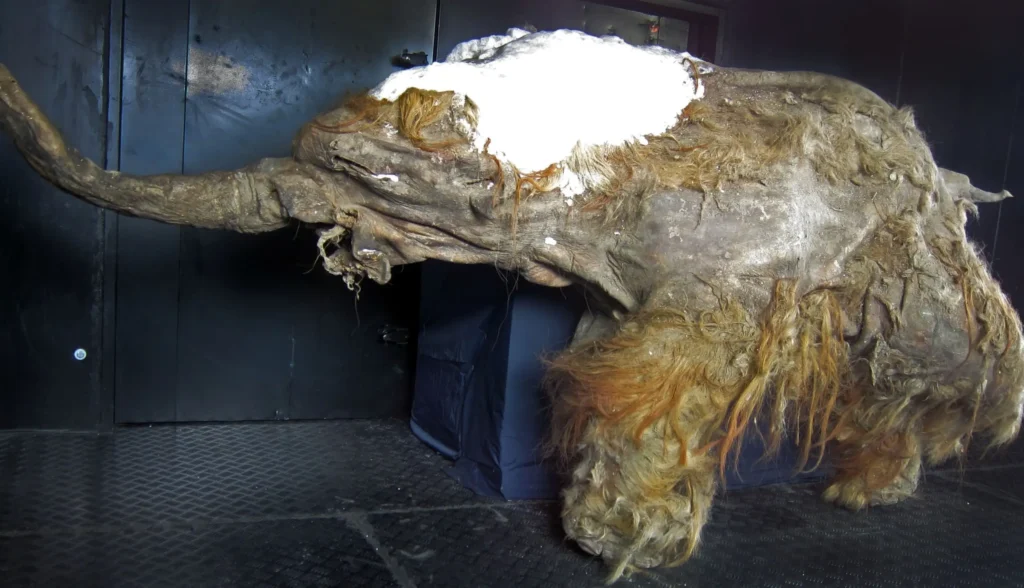
Another famous find is the baby mammoth Lyuba. This earlier discovery was made in May 2007 by a reindeer herder named Yuri Khudi and his three sons. Until the discovery of Yuka, Lyuba was considered the best-preserved mammoth in the world. Lyuba was a woolly mammoth calf, only about 30 to 35 days old, and is believed to have died around 42,000 years ago.
But the story behind her discovery is far from simple. When the herders realized they had found something important, they initially refused to touch the body due to their Nenets beliefs, which associate contact with mammoth remains with bad omens. Instead, they traveled nearly 150 miles to consult a friend, who helped contact the local museum director. Authorities were dispatched, but upon arrival, they discovered the body was missing. Eventually, they found it displayed outside a local shop.
The shop owner had bought it from one of Khudi’s relatives in exchange for two snowmobiles. The mammoth’s body had been slightly damaged: dogs had chewed off its right ear and part of the tail. Luckily, the remains were recovered by helicopter and transported to a museum in Salekhard. The mammoth was named Lyuba – a diminutive form of Lyubov, meaning “love,” in honor of Khudi’s wife.
Summary:
- Discovery date: May 2007
- Location: Near the Yuribey River, Yamal Peninsula, Russia
- Discovered by: Local reindeer herders
- Age at death: Approx. 1 month
- Estimated death: Around 42,000 years ago
Interesting facts:
- The body was almost perfectly preserved, including the trunk, skin, fur, stomach contents, and even traces of mother’s milk.,
- Scientists believe she may have drowned in mud.
- Currently housed in the Paleontological Museum in Russia.
- Contributed significantly to cloning research efforts.
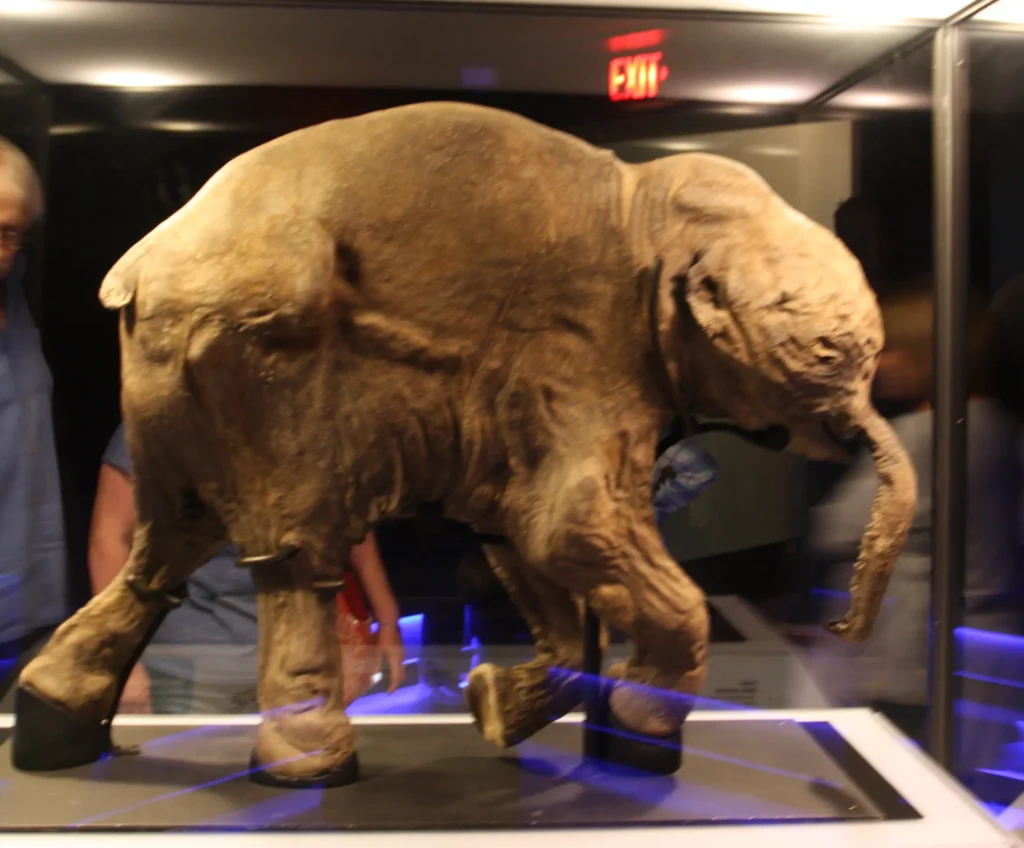
2. Lena Foal (Prehistoric Horse)
This extraordinary discovery of a prehistoric horse foal was made in 2018 in the area known as the Batagayka Crater in northeastern Siberia, often nicknamed the “gateway to the underworld.” It’s considered one of the best-preserved specimens of its kind ever found. The foal was about 2 months old and died over 42,000 years ago. Scientists believe it likely drowned in mud or a frozen pit and immediately froze, which contributed to the exceptional preservation of its body.
The foal’s remains were nearly intact its skin, fur, hooves, tail, and even internal organs and urine in the bladder were preserved. This allowed researchers to not only learn more about the now-extinct species Equus lenensis but also to extract samples for DNA analysis. The goal was to explore the potential for genetic reconstruction or to better understand the evolutionary history of modern horses.
Interestingly, the foal had light brown fur that covered its entire body, indicating it was well adapted to the harsh Ice Age climate. The find attracted international attention and became a key focus in the field of paleogenetics.
Summary:
- Discovery date: August 2018
- Location: Batagayka Crater, Yakutia region, Siberia (Russia)
- Discovered by: Team of researchers from Yakutsk University and Japanese scientists
- Foal’s age: Approx. 2 months
- Estimated death: More than 42,000 years ago
Interesting facts:
- The foal’s body was completely preserved skin, fur, hooves, organs, and even urine.
- Belonged to the extinct species Equus lenensis (Lena horse).
- Researchers explored the possibility of extracting DNA and blood for genetic study.
- These horses lived in northeastern Asia during the Ice Age.
- The research was conducted in collaboration with international labs in Japan.
You can check photos of this prehistoric animals here
3. Cave Lion Cubs: Dina and Uyan
In the summer of 2015, scientists uncovered two remarkably well-preserved remains of extinct cave lions (Panthera spelaea) in the frozen soil of Siberia. The discovery was made in the Yakutia region, in the Uyandina River valley, which also gave the name to one of the cubs. The find was so extraordinary that it is considered the best-preserved example of cave lions ever found.
Dina and Uyan were just 1 to 2 weeks old when they died likely due to the sudden collapse of a den or cave. According to researchers, the cubs were essentially “crushed” and then quickly frozen, which prevented any decomposition. Their bodies were found in incredible condition their fur, whiskers, claws, teeth, and even internal organs were all intact. The paw skin and eyelids were preserved as well, which is extremely rare in Ice Age finds.
These cubs belonged to a now-extinct species that was larger than today’s African lions and lived throughout Eurasia during the Pleistocene. The find gave scientists a detailed view of the anatomy, development, and potential behavior of these ancient predators. DNA samples were planned for analysis and comparison with modern-day big cats.
Summary:
- Discovery date: Summer 2015
- Location: Uyandina River Valley, Yakutia, Siberia (Russia)
- Discovered by: Local researchers during a permafrost expedition
- Age at death: Approximately 1–2 weeks
- Estimated death: 30,000–50,000 years ago
Interesting facts:
- The cubs were crushed during a den collapse, leading to instant death and freezing.
- Preserved features include claws, fur, whiskers, eyelids — exceptionally rare.
- These are the most intact cave lion remains ever discovered.
- Scientists planned DNA sampling and comparison with modern lions.
- The find contributes to better understanding the extinction of Ice Age megafauna.
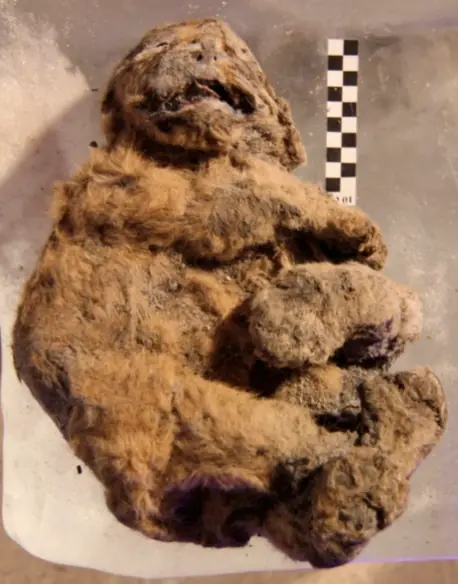
Cave Lion Cub: Sparta
In 2017, Russian scientists discovered an exceptionally well-preserved body of a cave lion cub in the Siberian permafrost, later named Sparta. The discovery was made near the Semyuelyakh River in the Yakutia region and is considered one of the best-preserved Ice Age animals ever found. The body included intact fur, skin, claws, organs, and even whiskers.
Sparta was a female Panthera spelaea (cave lion), believed to be about 1–2 months old when she died around 28,000 years ago. She likely perished in a collapsing den, much like her “cousin” Boris another cave lion cub found in the same area. While initially thought to be siblings, DNA analysis revealed they had lived thousands of years apart.
Researchers described her as “the most complete Ice Age animal ever discovered,” making her a highly valuable specimen for genetic research. Her state of preservation allows detailed studies of anatomy, DNA, and comparisons with today’s large cats.
Summary:
- Discovery date: 2017
- Location: Semyuelyakh River, Yakutia, Siberia (Russia)
- Discovered by: Russian researchers during a permafrost expedition
- Age at death: About 1–2 months
- Estimated death: Around 28,000 years ago
Interesting facts:
- Almost perfectly preserved — including fur, skin, whiskers, organs, and paws.
- Belonged to the extinct cave lion species Panthera spelaea, larger than modern lions.
- DNA analysis showed Sparta was not related to the cub Boris.
- Considered the best-preserved cave lion cub ever found.
- A crucial find for understanding the evolution of Ice Age predators.
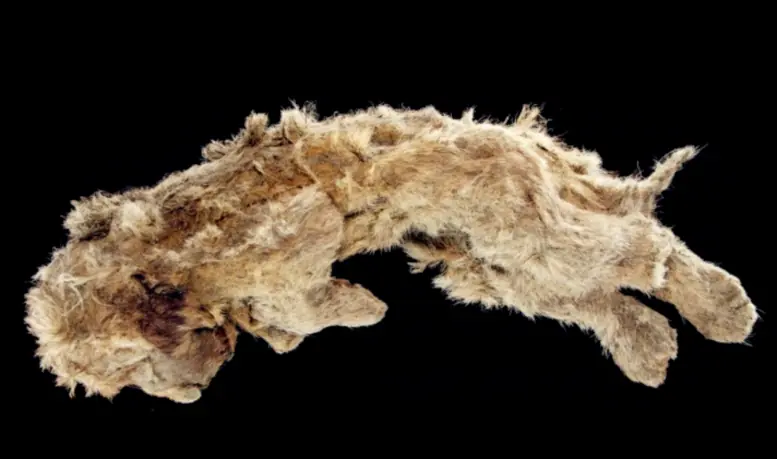
Even without the help of science fiction, the Ice Age continues to reveal astonishing secrets from beneath the permafrost. From baby mammoths with preserved blood to cave lions frozen mid-growth, these discoveries are not just remnants of the past — they are windows into prehistoric life. With every fur-covered body and DNA fragment, scientists gain new insights into how these ancient species lived, died, and adapted to a harsher world.
But the frozen earth holds even more.
In Part 2, we explore the equally breathtaking discoveries of wolves, bison, and the first fully preserved cave bear — creatures that roamed vast Ice Age landscapes and may still have more to teach us.






